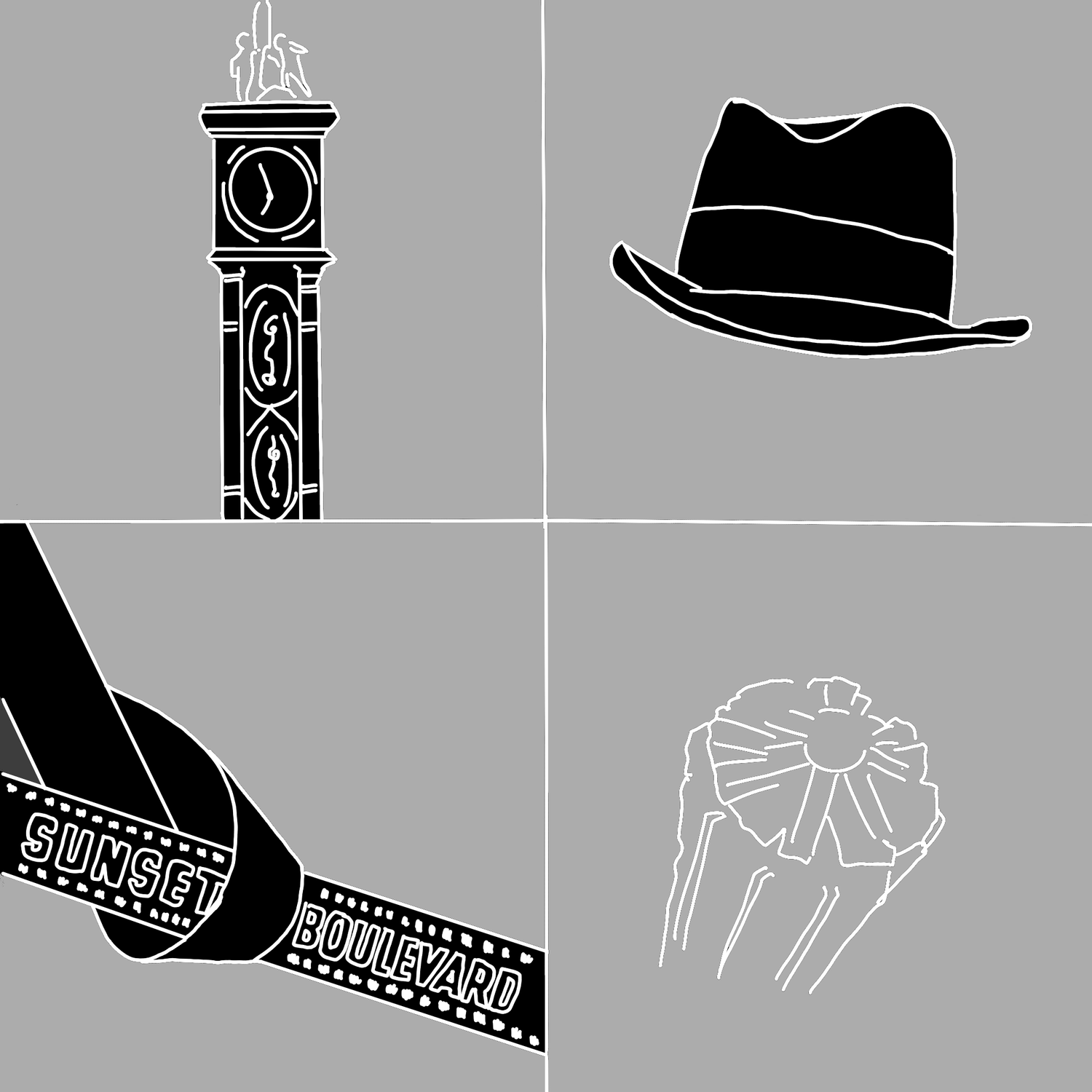
News
Summers Will Not Finish Semester of Teaching as Harvard Investigates Epstein Ties

News
Harvard College Students Report Favoring Divestment from Israel in HUA Survey

News
‘He Should Resign’: Harvard Undergrads Take Hard Line Against Summers Over Epstein Scandal

News
Harvard To Launch New Investigation Into Epstein’s Ties to Summers, Other University Affiliates

News
Harvard Students To Vote on Divestment From Israel in Inaugural HUA Election Survey
November of Noir: Four Dark, Shadowy Films

As the weather grows colder and the sky darkens at 4:30 p.m., what could possibly be better than curling up in your cozy dorm with a noir film? The moody, introspective atmosphere of these black-and-white films complements November’s overcast ambiance — perfect for embracing the penultimate month of the year. Encompassing both classic and neo-noir, this listicle is sure to transport you into a world of shadowy intrigue, complex characters, and unforgettable stories that will keep you hooked from start to finish.
“Laura” Dir. Otto Preminger (1944)
One of the greatest mystery noirs of all time, “Laura,” follows a detective investigating the murder of the eponymous femme fatale. After interviewing those involved in her life, he finds himself falling in love with the deceased Laura, all while discovering that the case is more complex than it first appears.
“Laura,” like many other 1940s black-and-white noir, features characters with ambiguous morals, a nonlinear structure, and chiaroscuro lighting. However, rather than being an archetype of its genre, “Laura” is sleek instead of gritty. The film transforms the femme fatale trope by revealing Laura’s death in the first sentence of the film’s narration. The detective’s fixation on a woman he has never met is a fascinating psychological study akin to Alfred Hitchcock’s “Rebecca” (1940) and “Vertigo” (1958). The interplay between reality and illusion makes “Laura” an unsettling meditation on desire and obsession. David Raskin’s haunting score adds to the film’s allure and is ranked among the finest in cinematic history. “Laura” will be sure to captivate viewers long after the credits roll.
“Sunset Boulevard” Dir. Billy Wilder (1950)
Similar to “Laura,” “Sunset Boulevard” opens with a murder, after which a struggling screenwriter proceeds to recount the events leading up to the crime. The narrative takes a gripping turn as the screenwriter becomes entangled with a forgotten silent film star, whose delusions of grandeur and desperate clinging to a bygone era are eclipsed by the rise of the talkies.
Director Billy Wilder has crafted numerous hits, but “Sunset Boulevard” is arguably his magnum opus. The black comedy excels on every level. John F. Seitz’s dark, cynical cinematography pairs perfectly with a screenplay by Billy Wilder, Charles Brackett, and D.M. Marshman Jr., boasting iconic lines still quoted today, such as “All right, Mr. DeMille, I'm ready for my close-up” and “I am big! It’s the pictures that got small.” The film’s proudest accomplishment, however, lies in the actors. Gloria Swanson as the histrionic, pitiful, unnerving aging actress is at the forefront of the talented cast and the heart of the movie. Her performance of tragic grandeur steals any scene she is in. Erich von Stroheim is equally as compelling, playing the actress’s devoted butler which lends the film a somber tone. For anyone interested in film noir this November, “Sunset Boulevard” is a must-see exploration of the dark side of Hollywood.
“Bonnie and Clyde” Dir. Arthur Penn (1967)
“Bonnie and Clyde” is a neo-noir about the rise and fall of the infamous bank-robbing couple. In the Great Depression, the bored, rebellious Bonnie meets Clyde, a charismatic troublemaker, and their life of crime and romance begins.
In the 1960s, cinema underwent a shift from big-budget musicals and wholesome family dramas to films with more countercultural and controversial themes. This change was driven by a new generation of young filmmakers, rebelling against the traditional studio system. “Bonnie and Clyde” stands as a defining film of this era, called New Hollywood. The film explores the moral ambiguity and disillusionment typical of classic noir, while simultaneously pushing boundaries with its depictions of sex, violence, humor, and style. Bonnie’s iconic skirts and berets became cultural touchstones, emblematic of the film’s sharp visual identity. The film's focus on youthful rebellion and its sympathetic portrayal of antiheroes made it a trailblazer, capturing the cultural and social upheavals of its time. The impact of “Bonnie and Clyde” is evident in contemporary films like “The Departed” (2006) and “Queen & Slim” (2019), which continue to explore stories of crime and unconventional heroes. What better time to watch this influential classic than now?
“Blade Runner” Dir. Ridley Scott (1982)
“Blade Runner” is not the first movie that comes to mind when “noir” is mentioned. It is unique to the other movies on this list in that it is a science fiction film. Set in the dystopian future of 2019, a former police officer is assigned to eliminate bioengineered synthetic humans, known as replicants.
A cult classic, “Blade Runner” is another neo-noir. It draws inspiration from the genre’s traditional themes — particularly with the story following a former police officer navigating a grim, urban landscape. The visuals of a high-tech metropolis, drenched with darkness, rain, and decay, are stunning; they evoke the atmosphere of classic American film noir, yet still feel innovative and fresh forty years after its release. The script of “Blade Runner” is equally wonderful, with the iconic “tears in rain” monologue standing out as one of the most poignant scenes in the movie. The narrative itself is inconclusive and invites the audience to contemplate themes of identity and humanity in a future world. Like the other movies on this list, “Blade Runner” asks viewers to reflect on the darker side of human nature, making it the ideal watch for a November of mystery and contemplation.
—Staff writer Elizabeth E. Choi can be reached at elizabeth.choi@thecrimson.com.
Want to keep up with breaking news? Subscribe to our email newsletter.
